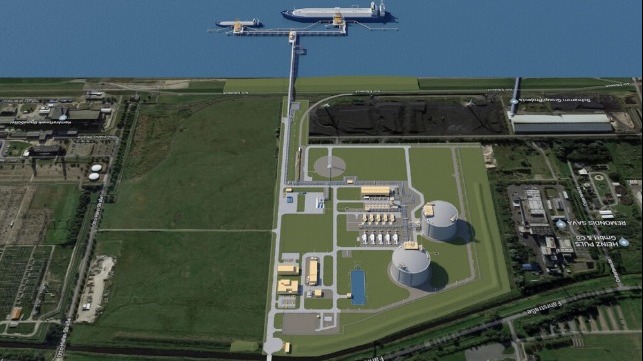Germany Speeds Plan for First LNG Terminal to Replace Russian Gas

Germany is moving forward with plans to accelerate the development of its first LNG import terminals as the country looks to reduce its dependence on Russian oil and gas. After the decision not to certify the Nord Stream 2 pipeline while the country has also been moving to actively close coal and fossil fuel energy plants, the federal government said it would take steps to support two planned projects for the country’s first LNG import terminals.
The federal government announced over the weekend that it had reached an agreement with a private partnership that was working on developing the first LNG terminal, which was planned for a location at the mouth of the Elbe near the Kiel Canal, Cuxhaven, and the entrance to Hamburg, Germany’s business port. The project planned for the town of Brunsbüttel is also located close to the region’s largest industrial zone.
Kreditanstalt für Wiederaufbau (KfW), a German state-owned investment and development bank, will join the effort to build the new terminal replacing two of the original founding partners, Vopak LNG Holding and Oiltanking GmbH, a subsidiary of Marquard & Bahls, which will both leave the group of shareholders by May 2022. KfW will join with Dutch energy company Gasunie, which was the third founding partner in the project, to speed the development of the LNG terminal. Gasunie aims to start construction this year for the terminal.
“With the LNG terminal in Brunsbüttel, we are responding to the latest geopolitical developments. We must reduce dependence on Russian gas. LNG terminals help to increase the security of supply in Germany and Europe,” said Robert Habeck, German Ministry of Economic Affairs and Climate. “At the same time, we are preparing for the future by designing the terminal in such a way that green hydrogen or hydrogen derivatives (such as ammonia) can be imported at a later date.”
First announced in 2017, and officially launched in 2018, the scoping procedure was carried out and concluded by the authorities in 2019, but the project was still slowed by reviews. The planning approval process was started last year but is now being moved ahead at full speed, and the general contractor,
Cobra/Sener, they reported will be commissioned to start the preparatory work immediately.
The terminal at Brunsbüttel will be constructed for the import and onward distribution of LNG. The project includes a jetty with two berths for vessels up to Q-Max size and facilities for the distribution of LNG by tankers, railway tankers, and bunker vessels. It will have two tanks with a capacity of 165,000 m³ each and an LNG regasification plant. Gasunie operates a distribution system and expects the terminal will provide a vital link, especially for regions not served by gas pipelines.
The terminal is estimated to have an annual capacity for up to 8 billion nm³ of natural gas, however, that is only a small fraction of the 55 billion nm3 per year expected from Nord Stream 2. The existing Nord Stream 1 pipeline has a similar current capacity.
The federal government is also believed to be focusing on a proposed FSRU terminal that Uniper was exploring for Wilhelmshaven. German Energy Minister for the Lower Saxony region Olaf Lies at the end of February was quoted as saying, “We as a state will do everything we can to advance the planning together with the city of Wilhelmshaven and the federal government. We can manage to start landing liquid gas as early as 2024,” he said in response to German Chancellor Olaf Scholz’s promise to decrease the country’s dependence on Russian gas by rapidly developing alternative facilities.
